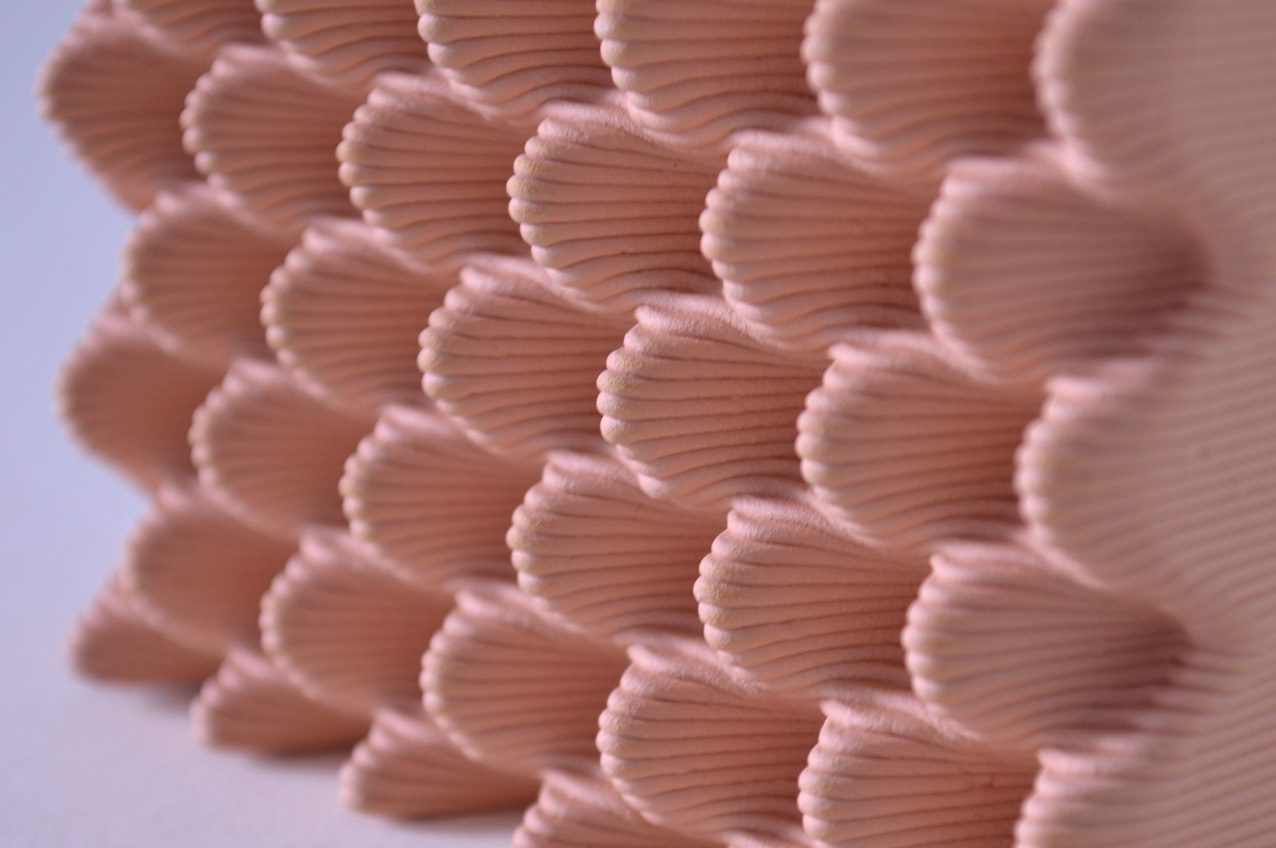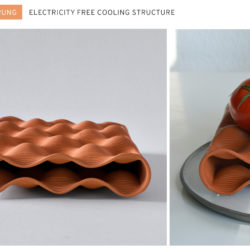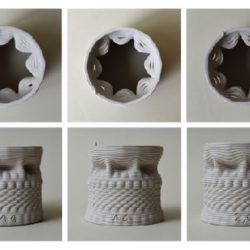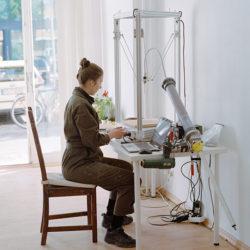NEW (TOOL)PATHS
Description
The project "New (Tool)Paths" examines the possibilities and limits of ceramic 3D-printing and based on the results of the research provides an outlook on useful application potentials. The ceramic test objects were generated with a self-designed 3D printing system. By combining the material properties of ceramics and shaping by using 3D-printing technology, the unique properties in the identified areas of insulation, filtration, air conditioning and acoustics can be optimally utilized. It was found, for example, that the additive manufacturing process requires an increase in surface area and that the porous stoneware can therefore absorb more water and evaporate, so that the adiabatic cooling effect is increased - on the basis of these findings, the concept for a passive solution for cooling food was developed - a 3d-printed storage surface that only needs to be watered to activate the cooling effect.What is the Topic?
In product development, additive manufacturing opens up new paths in shaping, which opens up new possibilities for researching and integrating material properties in design and manufacturing processes. In the course of my master's thesis, I explored and examined the potentials and limits that arise from the use of 3D printing technology in the processing of ceramic materials. Thus, the findings of my experimental investigation can serve as a basis for the development of novel functional products.
Why does it look like this?
Ceramic 3D printing describes a process in which ceramic mass is extruded and forms a shape by addition of layers. In this way, geometries such as fine grids, hollow chambers or undercuts can be created from ceramic, which were difficult or even impossible to produce in conventional ways. The layer-by-layer material addition remains visible and tangible in the form of fine grooves and a structured surface. This is an aesthetic feature of the process and can be understood as an original quality and should be considered in the design. In the course of my work I show how the characteristic qualities such as a large surface can be used functionally.
What is special?
Digital manufacturing processes, such as 3D printing, have been an integral part of design practice for some time. However, too little attention is still paid to the actual qualities and potentials of this process. Attempts are being made to imitate the aesthetics of manual processes instead of discovering new aesthetic standards for new production methods. I do not see ceramic 3D printing as a substitute for manual processes, but rather as an extension of the possibilities. With my work, I am looking for new and innovative product ideas that make functional use of these potentials and consciously incorporate the characteristic features of the production process into the design.
What is new?
Digital manufacturing processes, such as 3D printing, have been an integral part of design practice for some time. However, too little attention is still paid to the actual qualities and potentials of this process. Attempts are being made to imitate the aesthetics of manual processes instead of discovering new aesthetic standards for new production methods. I do not see ceramic 3D printing as a substitute for manual processes, but rather as an extension of the possibilities. With my work, I am looking for new and innovative product ideas that make functional use of these potentials and consciously incorporate the characteristic features of the production process into the design.




